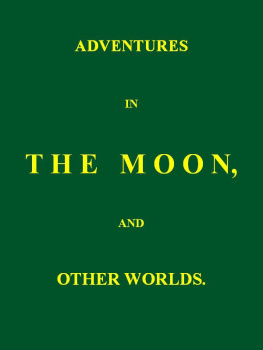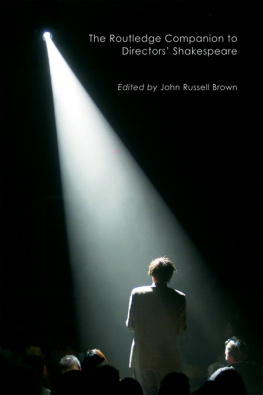NORTH AMERICA.
Table of Contents
I have the pleasure of laying before the New York Historical Society a brief account of the progress which has been made during the past year towards extending our knowledge of the globe, particularly with reference to its geography, and to those nations whose history is imperfectly known. The subject is one that more properly belongs to ethnology, but the historical results which are deduced from these enquiries come within the scope of the objects, the elucidation of which belongs to this Society.
A new impulse has lately been given to the study of American Antiquities. A brief account of recent investigations carried on in a portion of the West and South will show that we possess much that is interesting, and which will throw light on a neglected branch of aboriginal history and ethnology.
Every enquirer into the origin and purposes of the monuments and ancient remains of the Mississippi valley has regretted the limited number and poorly attested character of the facts, of which the public are in possession, respecting them. The practical investigations made from time to time by various individuals, have not been sufficiently thorough and extensive, nor have they developed sufficient data to warrant or sustain any definite or satisfactory conclusions. They have served rather to provoke enquiries which they could in no degree satisfy, than to afford information on the subject with which they were connected.
It was under a strong sense of the deficiencies in our stock of information in this branch of knowledge, that two gentlemen of Chillicothe, Ohio, Dr. Davis and Mr. E.G. Squier, undertook the exploration of the ancient remains which abound in the state of Ohio, and particularly of those in the valley of the Scioto river.
It is known that there exists in this region vast numbers of mounds, of various dimensions, and extensive embankments of earth, enclosing in some instances many acres of ground. Beside these there are ditches, walls, causeways and other works of a greater or less extent. The examination of these, by opening the mounds, and making accurate surveys of the other works constitute the labors of these gentlemen, some of the results of which may be stated in anticipation of a full account which will shortly appear.
Though their labors at first promised to end in increased doubt and uncertainty, they were abundantly rewarded as their enquiries progressed. Out of confusion, system began to develope itself, and what seemed accidents, were found to be characteristics. What was regarded as anomalous, was recognized as a type and feature of a class, and apparent coincidences became proofs of design.
For instance, it was remarked among the numerous tumuli opened, that certain ones were stratified, while others were homogeneous in their composition. Further observation showed that stratified tumuli occupy a certain fixed position with regard to other works, which the unstratified tumuli do not. Still further examinations demonstrated that the contents of those respective tumuli are radically and invariably different. Here then was established: 1st. That the mounds are not, as is generally supposed, identical in character and purpose. 2d. That one class occupies a fixed position with regard to works of a different character, the design of which is to be determined, to some degree, by the peculiarities and the contents of this description of mounds, etc.
It will be seen, at once, that a close observation of facts of this kind is absolutely essential, to arrive at any reasonable conclusions, regarding the purposes of these ancient structures, their origin, or the character or customs of the people by whom they were built. The investigations of Dr. Davis and Mr. Squier, were therefore conducted so as to permit the escape of no fact which might tend to elucidate the mystery in which our antiquities are shrouded. The excavations were made under their personal direction, and the results may be briefly stated, without detailing the facts in support of each conclusion, as follows.
The number of enclosures or earthworks which have been surveyed by them, and of which they have taken careful admeasurements, exceeds ninety. The number of tumuli which have been excavated and their characteristics noted, amounts to one hundred and fifteen.
Of the first class of works, it has been sufficiently demonstrated, that a small proportion were intended for works of defence; that another portion were sacred places, or in some way connected with religious or superstitious rites, while a third and much the larger number are entirely inexplicable in our present state of information.
The tumuli are divided into three grand classes, which are broadly marked in the aggregate, though there are individual instances of an anomalous character. These are:
1st. Tumuli of sepulture, each containing a single skeleton enclosed in a rude, wooden coffin, or an envelope of bark or matting, and occurring in isolated or detached groups.
2d. Tumuli of sacrifice, containing symmetrical altars of stone or burnt clay, occurring within or in the immediate vicinity of enclosures, and always stratified.
3d. Places of observation, or mounds raised upon elevated or commanding positions.
Within these monuments have been found implements and ornaments of silver, copper, lead, stone, ivory and pottery, fashioned into a thousand forms, and evincing a skill in art, to which the existing race of Indians, at the time of their discovery, could not approach. Marine shells, mica from the primitive regions, native copper from the shores of lake Superior, galena from the upper Mississippi, cetacean teeth, pearls and instruments of obsidian, show the extent of communication and intercourse had by the authors of these ancient works. Sculptures of animals, birds and reptiles have been found in great numbers and variety, exhibiting a skill which few could now surpass. Also, sculptures of the human head, disclosing most probably the character of the physiognomy, as well as the manner of adjusting the hair, the head dress and ornaments of the mound-builders. Careful admeasurements of the earth works which abound in the Ohio valley, have been made by the gentlemen alluded to, in which the interesting fact has been developed, that many of them are perfect circles and squares, and hence that the people by whom they were constructed had some means of determining angles and of constructing circles. In some of those earth-heaps, sufficient remains to show that when in a perfect state, they resembled the teocallis or terraced edifices of Mexico and Yucatan, though they were composed wholly of wood and earth.
The number of works manifestly connected in some way with their religion, guide us to some estimate of the prominence which their superstitions occupied, and that a religious system existed among them, in some degree resembling that of the ancient Mexicans. The immense tumuli heaped over the remains of the dead, show the regard which they attached to their chiefs, and the veneration in which they held their memory. The number and extent of their remains of all kinds, which occupy the fertile valleys, and which are confined almost entirely to them, indicate that an immense population once existed there, that it was stationary and therefore agricultural; and if agricultural and stationary, that a different organization of society, different manners and customs, different impulses and feelings existed among them, than are to be found among the hunter and nomadic tribes, discovered by Europeans in possession of the country.










